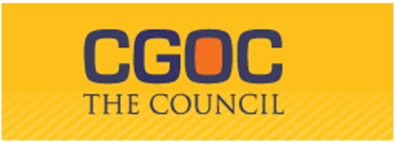eDiscovery Cautionary Tales: Inadvertent Disclosure Leaves Naked Short Selling Practices Exposed

While traveling back from Los Angeles for LegalTech West Coast 2012 (LTWC) this week, I saw an interesting story on the Above the Law blog (with references to The Economist, DeepCapture and Rolling Stone) regarding a litigation blunder committed by a major law firm on behalf of a major client, inadvertently disclosing an unredacted version of a sensitive document.
The California office of Morgan Lewis handling high-profile litigation for Goldman Sachs accidentally released an unredacted version of a document that the firm and its clients have spent years trying to keep secret. Overstock.com sued Goldman Sachs (as well as Merrill Lynch and also other banks now no longer involved in the case), claiming that the banks caused its stock to fall through the practice of “naked” short selling (which is selling stock you don’t have and didn’t borrow, creating an artificial supply of stock shares). The suit was dismissed by a California judge, who ruled that not enough of the alleged wrongdoing happened in the state. According to The Economist:
“That was how things stood until the end of last week, when the defendants’ lawyers sent their opposition to a plaintiffs’ motion to the other parties in the case. One of the exhibits attached to this, presumably inadvertently, was an unredacted version of an earlier filing by Overstock, opposing the defendants’ motion to seal papers. Within this exhibit is an intriguing six-page section, “Facts Defendants Improperly Seek to Seal” (pages 14-20 of this), containing excerpts of e-mails written by Goldman and Merrill employees.”
According to DeepCapture, the responsible lawyer is alleged to be Joseph Floren, a partner at Morgan Lewis. Ironically, Goldman and its attorneys have spent a significant amount of time (which means significant money) to keep this information sealed only to have this “blunder” release it publicly.
Matt Taibbi of Rolling Stone provides a commentary regarding information contained in the filing (language warning!), as follows:
“Now, however, through the magic of this unredacted document, the public will be able to see for itself what the banks’ attitudes are not just toward the “mythical” practice of naked short selling (hint: they volubly confess to the activity, in writing), but toward regulations and laws in general.
“Fuck the compliance area – procedures, schmecedures,” chirps Peter Melz, former president of Merrill Lynch Professional Clearing Corp. (a.k.a. Merrill Pro), when a subordinate worries about the company failing to comply with the rules governing short sales.
We also find out here how Wall Street professionals manipulated public opinion by buying off and/or intimidating experts in their respective fields. In one email made public in this document, a lobbyist for SIFMA, the Securities Industry and Financial Markets Association, tells a Goldman executive how to engage an expert who otherwise would go work for “our more powerful enemies,” i.e. would work with Overstock on the company’s lawsuit.”
A copy of the unredacted filing is located here. Needless to say, clear naming of files as to whether they are redacted or unredacted, along with a thorough quality check, could have prevented this mistake. I’ll leave it up to you to decide whether the mistake represents a form of karma in exposing these corporate practices. 🙂
So, what do you think? What procedures do you have in place for avoiding inadvertent disclosures? Please share any comments you might have or if you’d like to know more about a particular topic.
eDiscovery Daily will take a break for Memorial Day weekend. See you on Tuesday!
Disclaimer: The views represented herein are exclusively the views of the author, and do not necessarily represent the views held by CloudNine Discovery. eDiscoveryDaily is made available by CloudNine Discovery solely for educational purposes to provide general information about general eDiscovery principles and not to provide specific legal advice applicable to any particular circumstance. eDiscoveryDaily should not be used as a substitute for competent legal advice from a lawyer you have retained and who has agreed to represent you.




